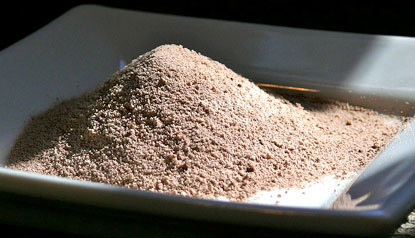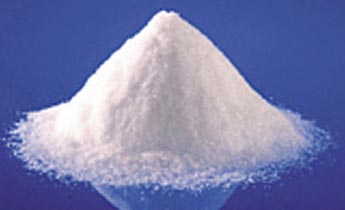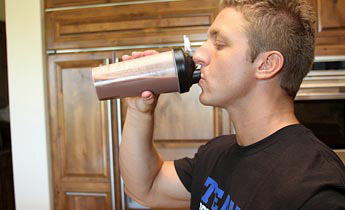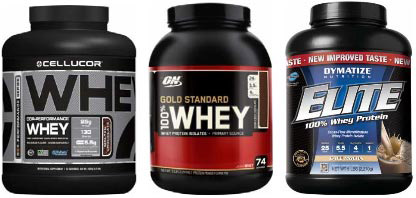WHEY PROTEIN POWDER SCAM: “AMINO ACID SPIKING”

Whey protein is one of the very few fitness supplements out there that gets a definite thumbs up from me.
It’s a very high quality source of natural protein with a top-notch amino acid profile and high bio-availability, and that helps you hit your overall protein and calorie needs in a more convenient, streamlined way.
It certainly isn’t mandatory, but for most muscle building and fat loss trainees, it can definitely help out.
But with whey protein production costs continually on the rise, and with literally thousands of different brands to select from, you need to choose carefully in order to ensure that you’re truly getting a high quality product.
Aside from the outright label fraud we sometimes see with smaller brands, a common tactic now being used by even some of the biggest companies out there is the practice of “amino acid spiking”.
What Is Amino Acid Spiking?

As you probably already know, amino acids are the individual building blocks that make up a complete protein. There are 22 standard amino acids that are recognized, with 9 being considered essential, since your body cannot make them on its own.
Amino acid spiking is essentially the practice of dumping high amounts of the cheapest, least valuable amino acids into the powder in order to cut costs while keeping the total protein content elevated.
For labeling purposes, the total protein gram amount listed on the product is based on the total nitrogen content. As a result, even though these isolated amino acids are technically not “protein”, they’ll still contribute to the total.
This means that you’re not getting a complete protein source when using these products, and it means you’re getting higher amounts of some of the least effective amino acids when it comes to supporting muscle protein synthesis.
The specific amounts that are used will certainly vary from product to product, but to my knowledge some companies are currently spiking as much as half of their total protein content with these low quality aminos. In other words, you might think you’re getting 30 grams of high quality, complete whey protein in every scoop, when in reality you’re only getting 15 grams along with a bunch of nearly worthless filler.
Even for the companies that do this on a small scale with just a few grams of cheap amino acids per scoop (in which case it probably won’t impact your bottom line results), why would you purchase a spiked protein powder when there are so many other legitimate options available? Why not get your full money’s worth? And, why support a company that is being blatantly dishonest with you?
How Do I Know If My Protein Powder Is Spiked?

Just take a look at the ingredient list on the label.
The first thing you’ll usually see is the type of protein listed, whether it be whey concentrate, whey isolate, a blend of the two, or a mix of other proteins like egg, casein, milk protein etc.
Then, simply scan the rest of the ingredient list to look for singular amino acids that have been added in.
For the purposes of amino acid spiking, the two that you’ll almost always see are l-glycine and/or l-taurine. These two are dirt cheap, non-essential aminos that cost far less than the actual whey protein. Since they’re also tasteless, adding them in high amounts helps to improve the overall flavoring of the product.

Another thing to look out for is added creatine. Creatine is also far less expensive than whey protein, and since it’s a combination of 3 amino acids (l-glycine, l-arginine and l-methionine) it will also register as part of the protein total.
Creatine is a great muscle building supplement and something that I personally use and recommend, but it has no place in a protein powder and should simply be purchased separately on its own.
So, if you see l-glycine, l-taurine or creatine listed anywhere in the ingredients list of your protein powder, it should raise a massive red flag, and in my opinion the product should be avoided. Although it’s not a guarantee that these aminos are contributing to the protein total, I’d say the chances are near 100% that that’s why they’re in there.
And since supplement companies know that the vast majority of consumers are totally unaware of this practice, they’ll actually play it up by giving fancy names to these amino acids to make it look like they’ve been added for a specific reason.
For example, one very popular brand includes an “NOS Complex” in their ingredient list, which is simply made up of l-arginine and l-taurine. Another lists a “Muscle Recovery Matrix” made up of creatine and l-glycine.
Nothing but pure marketing B.S.
What Are Some Good Whey Protein Products That Are NOT Spiked?
There are certainly many out there to choose from, but 3 I would personally stand behind and recommend are:
1) Optimum Nutrition 100% Whey (this is what I currently use)
2) Dymatize Elite Whey
3) Cellucor COR-Performance Whey

These products contain a clean blend of whey protein isolate and whey protein concentrate (with whey isolate being the more prevalent of the two), have no singular amino acids added in, mix well, taste good and are reasonably priced.
(Please note that I’m not affiliated with these specific brands and I’m simply giving my very best recommendation here)
If you found this article helpful, make sure to sign up for your FREE custom fitness plan below...




